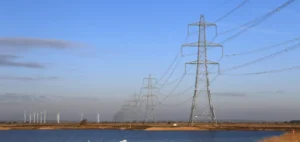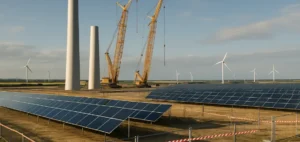A report published by IRENA on renewable energy shows that its production capacity in the world reached 3,372 GW at the end of 2022, an increase of 9.6% compared to the previous year. IRENA also notes that 83% of all new generation capacity added in 2022 is from renewable energy sources. The data in the report, Renewable Capacity Statistics 2023, highlights the continued growth of renewable energy around the world, despite global uncertainties.
Report shows growth mainly in Asia, the United States and Europe
According to the IRENA report, the largest increase in renewable energy production in 2022 is concentrated in Asia, the United States and Europe. China is the leading contributor with an increase of 141 GW of new capacity. Europe and North America increased by 57.3 GW and 29.1 GW respectively. Africa saw an increase of 2.7 GW, while Oceania saw a double-digit increase with an expansion of 5.2 GW. South America also confirmed its upward trend, with a capacity increase of 18.2 GW. The Middle East has seen the largest expansion ever in the renewable energy sector, with 3.2 GW of new capacity coming online in 2022, an increase of 12.8%.
Solar and wind power lead the way in renewable energy, according to IRENA
While hydroelectric power remains the largest source of renewable energy generation in the world, with 1,250 GW, solar and wind are the fastest growing sources. In 2022, the IRENA report shows that these two technologies formed 90% of all new renewable energy capacity. Solar generation capacity experienced the greatest growth, with a 22% increase, followed by wind, with a 9% increase. Renewable hydroelectric capacity also increased by 2%, confirming the trend of recent years. In contrast, bioenergy growth has declined slightly in 2022, rising to only 7.6 GW from 8.1 GW in 2021.
IRENA report confirms continued growth in renewable energy
According to the International Renewable Energy Agency (IRENA), renewable energy production has experienced record and continuous growth in recent years. This upward trend in renewable energy shows its resilience, despite the current energy crisis. Francesco La Camera, IRENA’s Director General, said that the case for renewable energy is strong and that with favorable policies, its share of the global energy mix will continue to grow. However, if we want to limit global warming to 1.5ºC, it is necessary to triple new renewable capacity every year until 2030.
A radical change is needed for the future
La Camera also stressed that the energy transition requires a radical change. Indeed, with energy demand rising in many parts of the world, supply-side decarbonization will not be sufficient to meet climate goals. One of the challenges of the energy transition is therefore to reduce dependence on fossil fuels, which still account for a large part of energy production in many countries. To achieve this, it is essential to promote renewable energies, such as solar, wind, hydro, geothermal and marine energy. In addition, it is necessary to develop energy storage technologies to ensure the efficient use of renewable energy.





















